Walk in the Footsteps of Heroes on a Juno Beach Tour
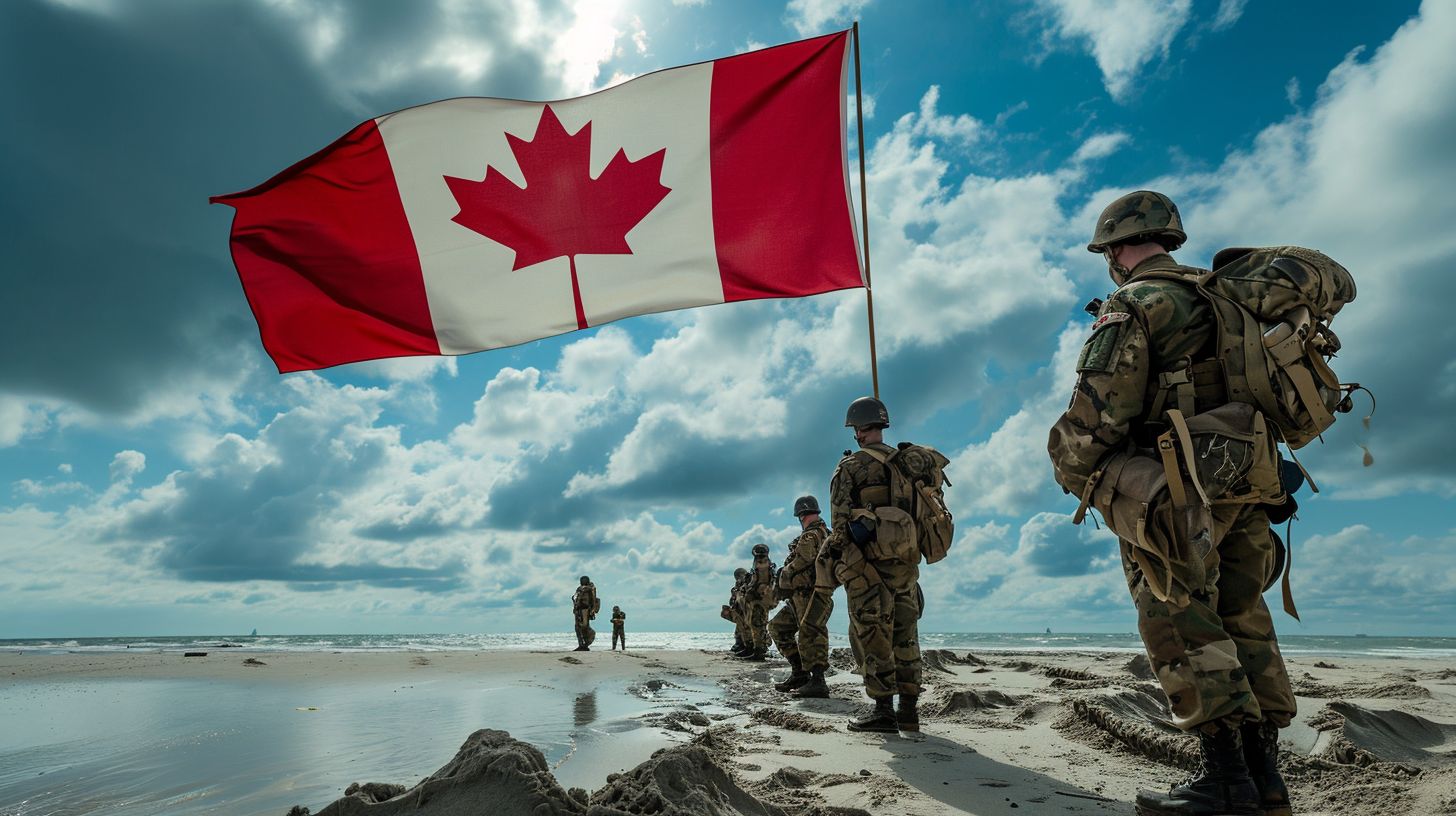
On June 6, 1944, a force of brave souls emerged from the churning waves of the English Channel and onto the sands of Normandy. Among them were thousands of Canadians, poised to leave an indelible mark on history during one of World War II’s most pivotal battles: D-Day.
I’ve tread the hallowed grounds where they fought and brought back not just sand in my boots but stories etched into my heart—a testament to Canada’s profound contribution.
Diving into our past reveals that over 14,000 Canadian soldiers stormed Juno Beach in a valiant effort to breach Hitler’s formidable Atlantic Wall defenses. Their courage under fire led to remarkable achievements that altered the course of conflict—and freedom—in Europe.
As someone who has studied and shared these chronicles for years, I invite you along a journey through time; we’ll walk where they walked and honor their legacy—truly understanding why our maple leaf flies high because of days like D-Day.
It all begins here.. Join me?.
Key Points
- Over 14,000 Canadian soldiers fought on Juno Beach during D-Day.
- The Royal Canadian Navy had about 110 ships and the Air Force protected troops from the air.
- Many Canadians were killed or wounded, but their efforts helped win Normandy.
- Memorials like Bény-sur-Mer Canadian War Cemetery honor those who sacrificed.
- Canada Remembers Program keeps the memory of these brave soldiers alive.
Brief overview of D-Day and the Battle of Normandy
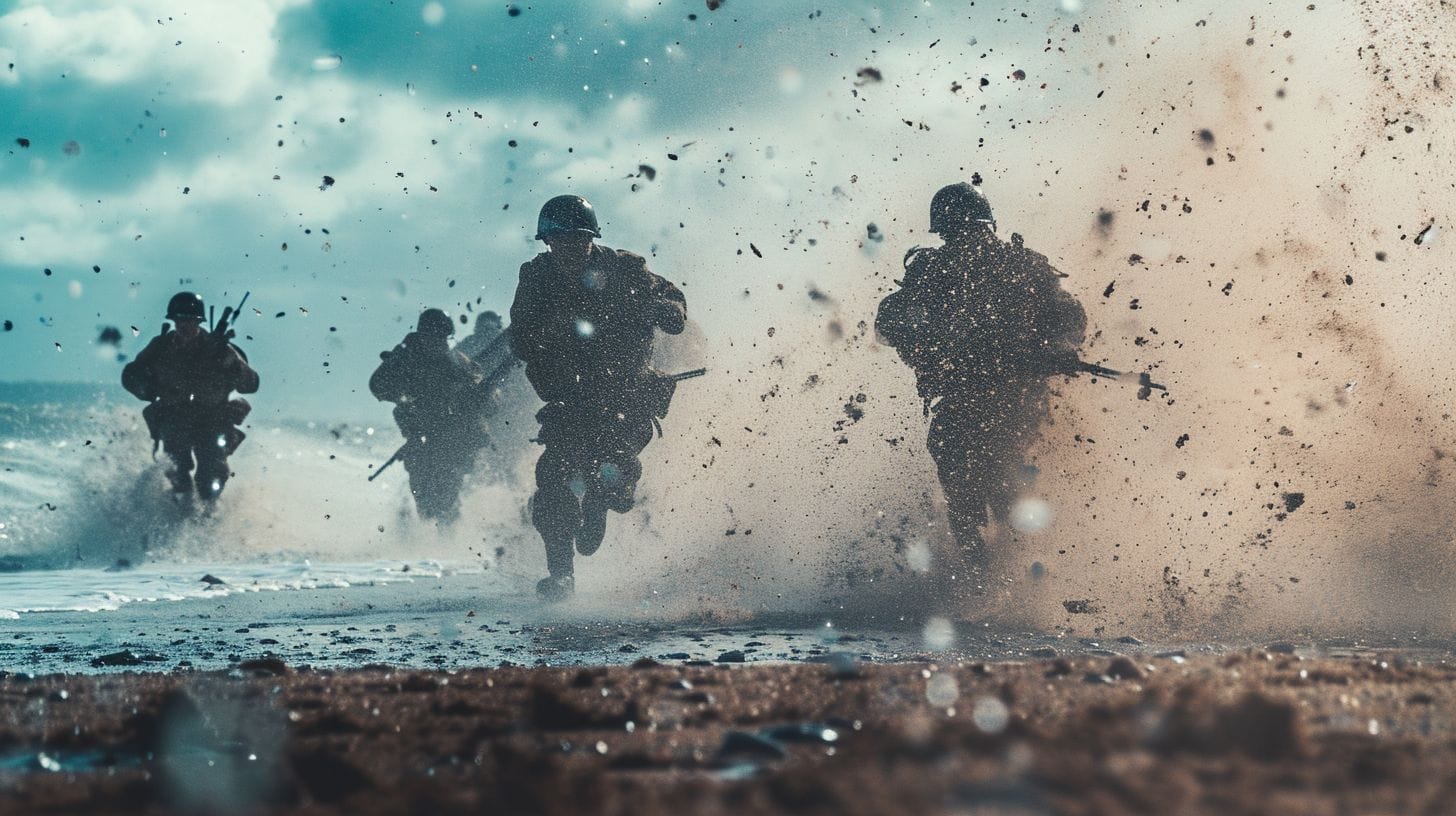
D-Day, the pivotal invasion that turned the tide of World War II in Europe, marked a day like no other. June 6th, 1944 saw thousands of Allied troops storming Normandy’s beaches to dismantle Nazi domination—a feat long etched in history books.
Among these courageous souls were Canadian forces landing on Juno Beach—braving bullets and bombshells to claim victory over German defenses part of the notorious Atlantic Wall. This stretch of sand became the testing ground for Canada’s wartime mettle; our soldiers forged ahead under daunting weather conditions and treacherous seas.
Picture this: A flotilla of vessels dotting the horizon as far as the eye can see—all converging on French soil with one mission: liberate Europe from tyranny. The Canadians at Juno played their part flawlessly amidst chaos, employing every ounce of grit taught back home across land and sea.
Just one day tour into this profound chapter tells tales enough for lifetimes, illustrating how these brave hearts helped establish a significant Allied foothold that would shape history forever after.
It wasn’t simply an invasion; it was Canada declaring its resolve alongside global allies—a fact that echoes through time each time we step along those hallowed shores or visit memorials where names are inscribed not just in stone but in national legacy too.
Significance of Canada’s contribution
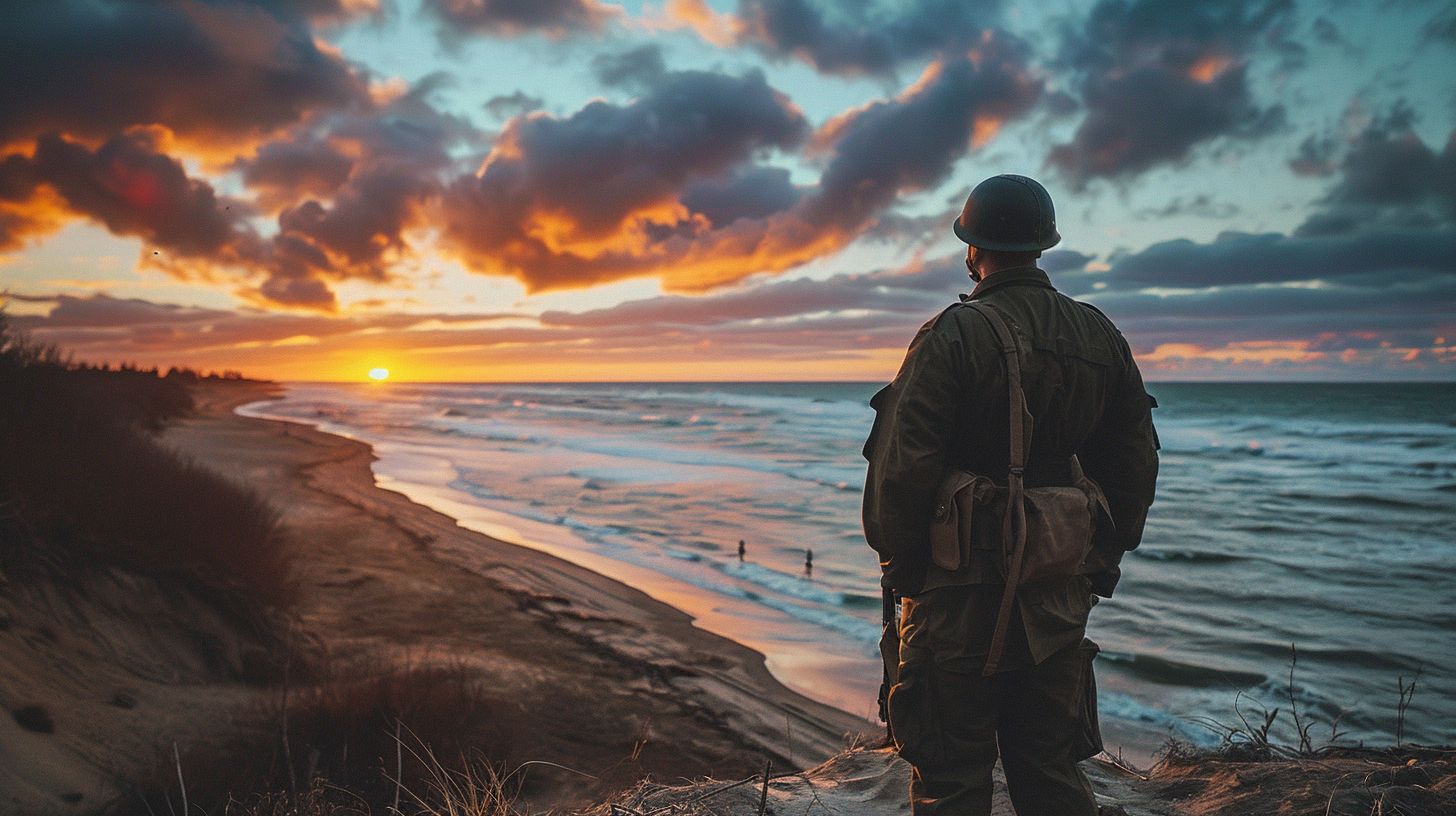
Canada’s role on D-Day was vital and brave. On that day, thousands of Canadian soldiers stormed Juno Beach. They fought hard against tough defenses put up by the Germans. The courage shown by these men helped to make sure that the Allies could break through in Normandy.
Canadian forces didn’t just fight on land; they were also important at sea and in the air. Ships from the Royal Canadian Navy joined the huge fleet crossing over to France. Also, planes from the Royal Canadian Air Force flew above to protect them all.
It took trust, skill, and teamwork for Canadians to execute their part of this big plan.
This effort wasn’t without a high cost – many Canadians gave their lives or got hurt during this battle but their sacrifice made a difference in winning back freedom in Europe.
Now museums, cemeteries, and memorials across those beaches tell stories about what they did for peace.
Canada’s Military Contribution
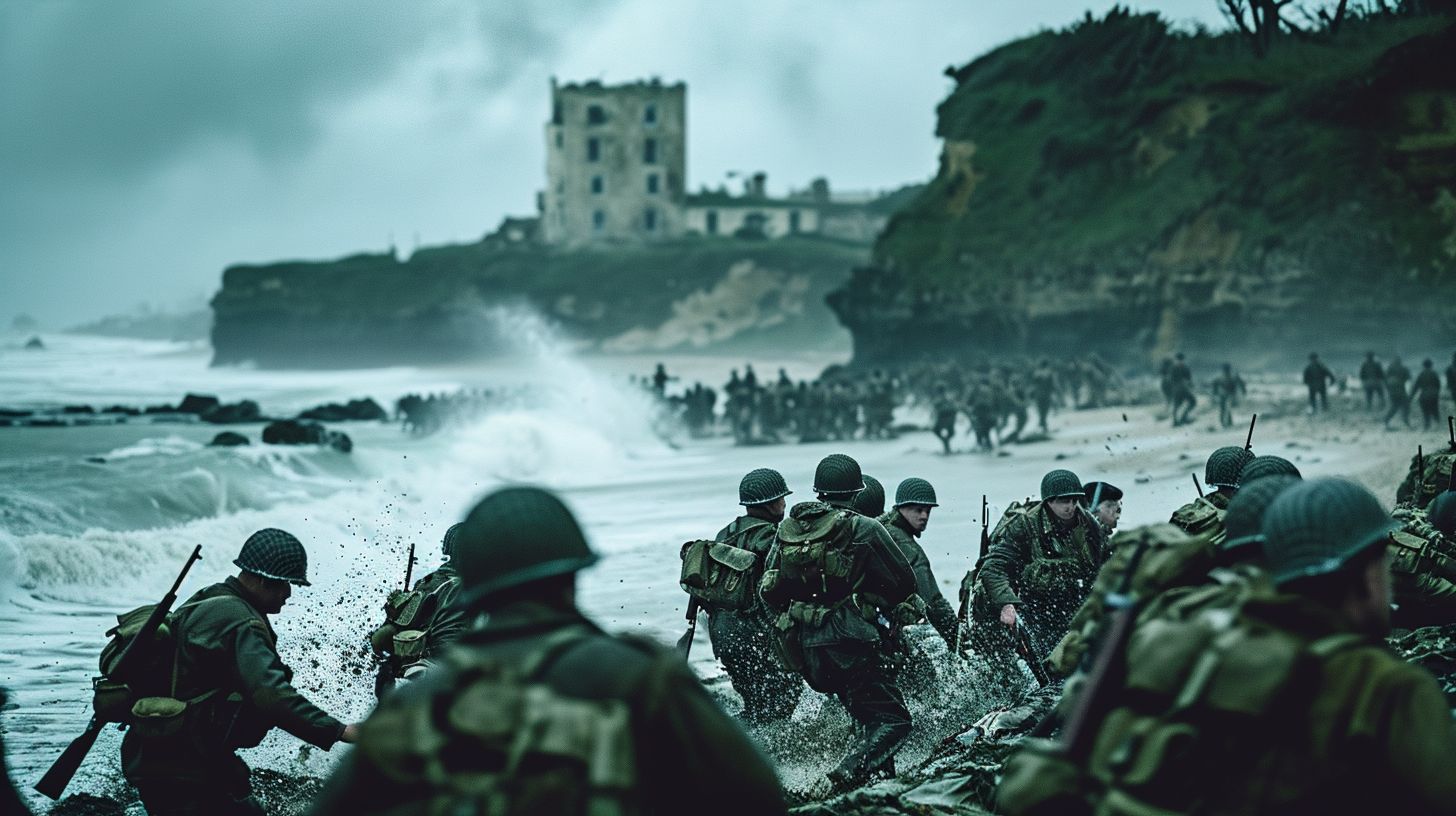
Alright, so Canada really stepped up during D-Day. The Royal Canadian Navy pushed hard, sending tons of ships to smash through the Atlantic waves. Their job? To protect and deliver our soldiers right onto French soil at Juno Beach.
And that’s not all – our Royal Canadian Air Force pilots took to the skies, keeping enemy planes away from the beachhead.
Can you believe we had over 14,000 brave men storming those shores? That’s like filling a whole hockey arena with soldiers! Plus, we brought with us nearly a hundred tanks ready for battle and about a dozen destroyers cutting through the water.
This wasn’t just some small-time effort – this was Canada showing what it could do on one of history’s biggest stages.
The role of the Royal Canadian Navy
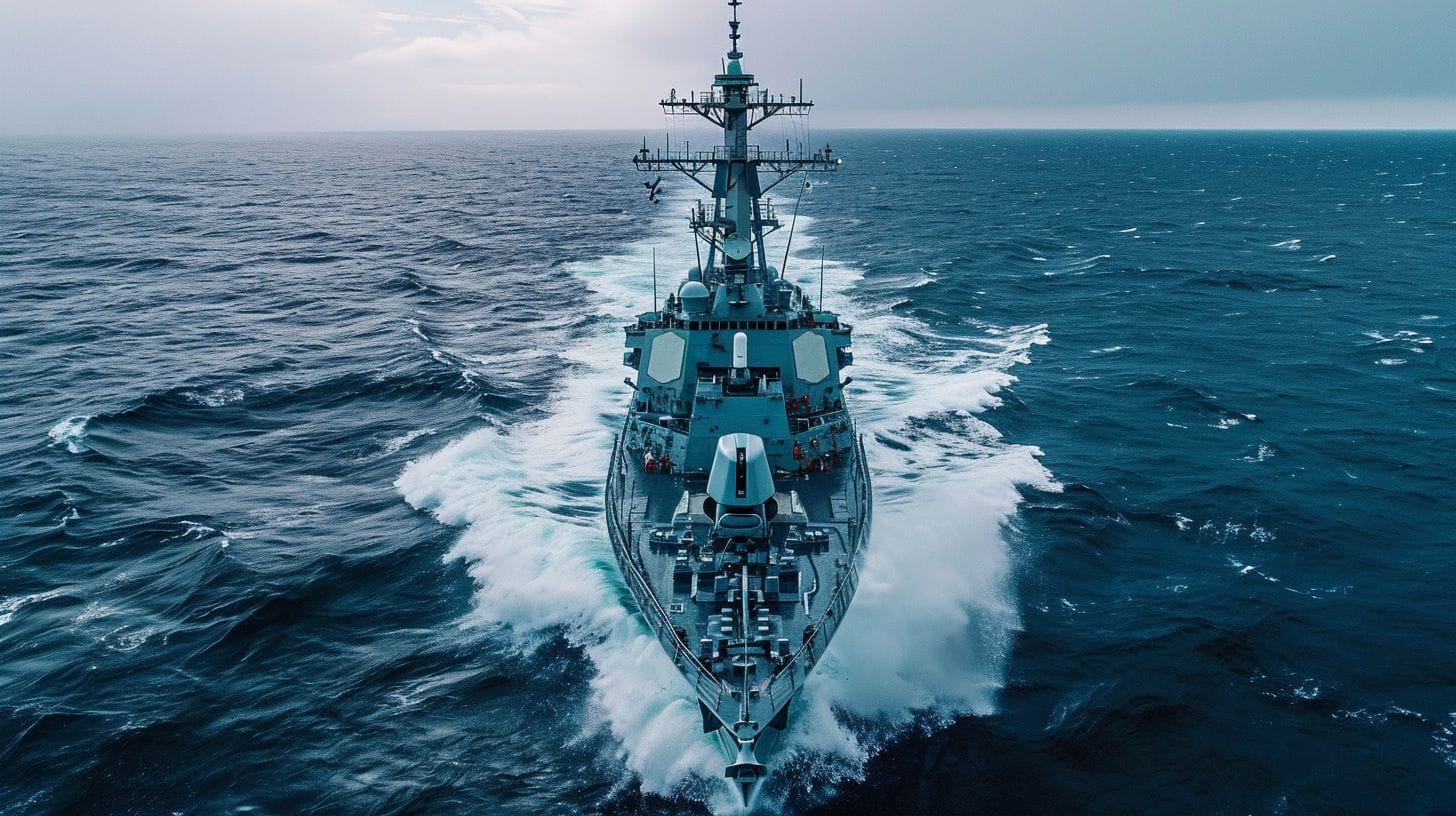
The Royal Canadian Navy was right in the thick of things on D-Day. They sailed ships across the choppy, cold waters of the Atlantic to help soldiers land at Juno Beach. Their task was tough—they had to protect everyone from enemy attacks and guide them through mine-filled waters.
The sailors also helped by shooting their big guns at German defenses along the coast.
These brave folks were part of a massive effort. Imagine this: there were over 10,000 sailors and about 110 Canadian ships! That’s not all—they brought landing crafts that carried troops right onto Juno Beach, where they fought for freedom.
Next up, let’s talk about how planes from the Royal Canadian Air Force joined in during this huge battle!
Involvement of the Royal Canadian Air Force
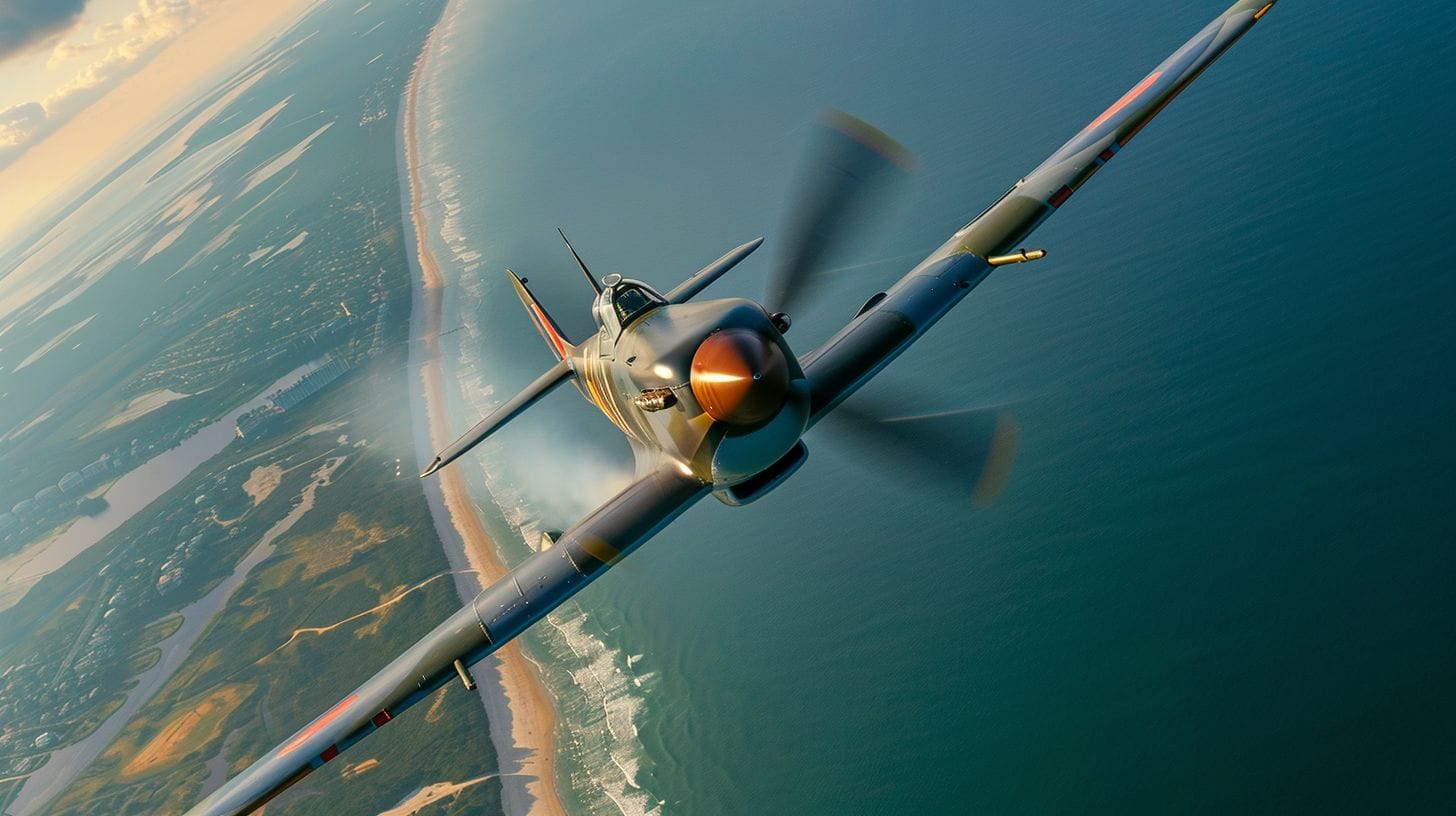
Canada’s Royal Canadian Air Force (RCAF) played a big part on D-Day. They flew over the skies of Juno Beach, keeping our brave soldiers safe below. These pilots were like eagles, watching over the men as they fought and worked to free France from enemy hands.
They had an important job: stopping enemy planes from attacking and making sure our ships could reach the beach safely. Their hard work helped make the invasion at Juno Beach a success.
After their missions, these air heroes would head back to base, ready to soar again if called upon.
Next up is how many Canadian troops stormed Juno Beach that day..
Number of Canadian soldiers, vessels, and other resources deployed
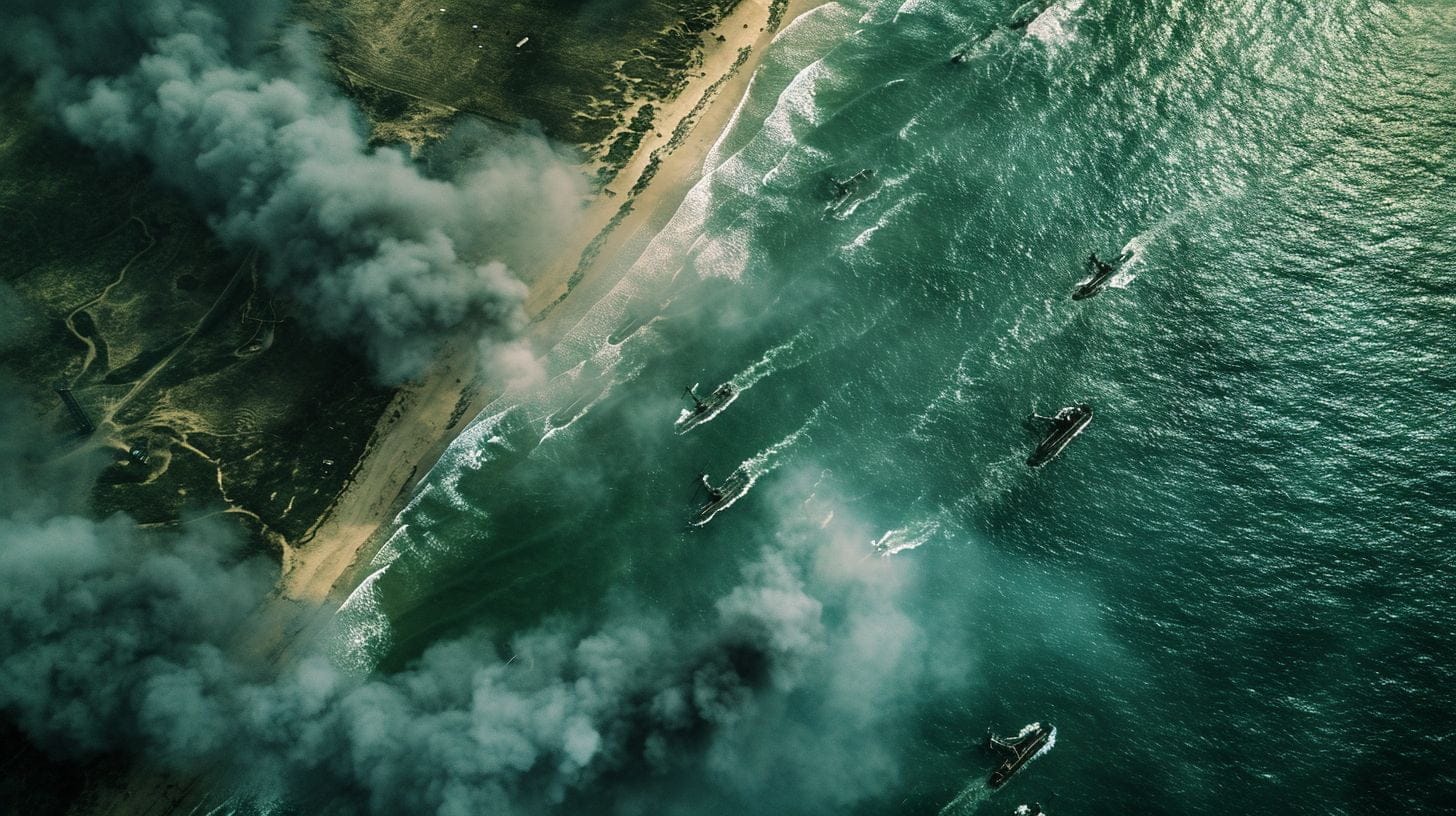
Flying high above the waves, the Royal Canadian Air Force had set the stage for a massive effort. On D-Day, Canada came with full force. Over 14,000 brave soldiers from the land of the maple leaf stormed Juno Beach.
They didn’t come alone; they brought power on water too. The Royal Canadian Navy sailed in with about 110 vessels ranging from mighty warships to support craft that carried troops and supplies.
The troops also had heavy backup from tanks and artillery provided by the Canadian Army. All these forces joined together made sure Canada played a big part in D-Day. Each soldier, ship, and piece of gear was there to make sure freedom could win that day on Juno Beach.
The Invasion of Juno Beach
On D-Day, Canadian soldiers faced a tough fight at Juno Beach. They ran across the sand while shots rang out around them. The beach was part of Hitler’s Atlantic Wall and had many defenses set up to stop invaders.
Canadians had to deal with obstacles like barbed wire and mines. Despite this, they pushed forward bravely.
The battle cost many lives, but Canada’s troops did not give up. They fought hard and took over key spots from enemy forces by the day’s end. Their bravery helped make sure that D-Day was a success in opening up Western Europe for liberation from German control.
Description of the assault on Juno Beach
Early in the morning, Canadian soldiers stormed Juno Beach. They faced cold water and enemy fire as they came onto the sand. Their goal was to take over part of Normandy from Germany.
This area was called the Canadian sector. The men had a big job ahead.
Gunfire hit them from all sides as they raced across the beach. There were strong defenses waiting for them, built by the Germans known as Atlantic Wall bunkers. These large concrete blocks were tough to get past.
But the Canadians kept going, fighting hard against bad odds.
Challenges and obstacles faced by the Canadian forces
The Canadian forces had a tough job on D-Day. They stormed Juno Beach and faced the enemy’s strong defenses. The soldiers battled through barbed wire, mines, and gun nests that were all part of the Atlantic Wall.
Bad weather made it even harder to land on the beach. They also had less support from tanks than they hoped because many sank in the rough sea.
Even with these problems, Canadian troops fought bravely. They moved forward despite heavy fire from German soldiers. Their goal was to break through and make space for more Allied troops to come ashore.
This mission was risky, but it helped change the course of World War II.
Canadian casualties and achievements during the invasion
Overcoming huge challenges, Canadian soldiers made their mark on D-Day. They stormed Juno Beach and fought hard against tough defenses. Sadly, many Canadians did not make it through the day.
Around 340 were killed with over 570 wounded or missing.
But their bravery led to great success. The Canadians pushed further inland than any other allies that day. They also captured key positions which helped win the Battle of Normandy later on.
Their courage and skill showed the world what Canada could do in a fight for freedom.
Canadian Sacrifices and Memorials
Many Canadian soldiers fought bravely on D-Day, and sadly, some did not make it back home. The numbers tell a story of great courage: 359 Canadians died at Juno Beach; overall, more than 5,000 made the ultimate sacrifice during the Battle of Normandy.
These heroes are remembered far from where they fell. In places like Bény-sur-Mer Canadian War Cemetery, rows upon rows of white headstones stand in quiet tribute to their lives.
You can feel history come alive when you visit these sacred spots. At the Juno Beach Centre‘s exhibits or while walking through the cemetery grounds, every name tells a tale worth honoring.
It’s important to take this chance to pay your respects and learn about Canada’s role in those historic times. Whether you’re standing by the waves on Juno Beach or exploring one of the museums that honor our country’s contributions, remember—these memorials keep stories alive for future generations.
Statistics on Canadian casualties
Paying tribute to those who fought, we must look at the cost. Over 5,000 Canadian soldiers became prisoners of war. Sadly, more than 45 thousand Canadians lost their lives during World War II.
This includes about 5,500 during the Battle of Normandy. Additionally, thousands were wounded with injuries both seen and unseen.
Every number here tells a story of bravery and loss. In Normandy alone, the land is marked by graves of Canadians who never came home—each headstone in places like Beny-sur-Mer Canadian War Cemetery stands for a family changed forever by war.
These sacred spots remind us that freedom comes at a high price – one paid willingly by so many young Canadians on D-Day and beyond.
Commemoration of Canada’s sacrifices in Normandy
They fought bravely and many did not come home. To honor these heroes, Normandy holds memories of Canada’s soldiers at every turn. Walk through the Canadian War Cemetery and you’ll see rows upon rows of gravestones.
Each one tells a story of courage and gives a face to sacrifice.
War monuments stand tall throughout Normandy’s landscape—a silent tribute to those who paid the ultimate price for freedom. The Juno Beach Centre is a place where stories live on, ensuring we never forget what was won—and lost—here.
Visiting this hallowed ground can stir deep feelings of gratitude and respect for the fallen Canadians, whose efforts changed history forever.
Mention of memorials, war cemeteries, and museums honoring Canada’s role
Paying respect to those who fought is a powerful part of the journey. At rest in war cemeteries, Canadian soldiers lie surrounded by the peaceful Normandy landscape that was once a fierce battleground.
The Bény-sur-Mer Canadian War Cemetery holds many of them; here visitors can pay their respects and read the names of heroes etched in stone. Not far from these hallowed grounds, museums tell tales of bravery and sacrifice.
You’ll find personal stories, captured moments, and relics from D-Day at places like the Juno Beach Centre—a space dedicated entirely to Canada’s role during the Normandy landings.
Walk through history where Canadian boots pressed into sandy beaches now named Juno. These sacred spots are where valiant efforts meet somber reflection—the perfect balance for learning and honoring at once.
Every exhibit and memorial stands as testament to what happened on that historic day: courage faced fear head-on. So take your time at these sites; they’re not just stops on a tour but anchors for deep appreciation and understanding of Canada’s immense contribution to restoring peace in Europe.
Legacy and Remembrance
Canada holds a deep sense of pride for the bravery shown during World War II. The country believes it’s important to keep the memory of those who fought and sacrificed alive. Through programs like Canada Remembers, this history is shared and honored year-round.
People across the nation pause on days like Remembrance Day, but also through everyday education.
Schools teach kids about D-Day and museums showcase artifacts from that time. It’s all part of making sure we never forget what was given for our freedom today. Next up, let’s explore what you’ll discover on a Juno Beach tour, including sights, sounds, and stories from this historic shoreline.
National pride in Canada’s efforts during the Second World War
Canada’s brave actions in the Second World War fill our hearts with pride. Thousands of Canadian soldiers fought far from home to help bring peace to the world. They faced tough battles and many did not return.
These heroes showed courage and strength on the beaches of Normandy and beyond.
Their stories are part of who we are today as Canadians. Schools teach about their sacrifices, ensuring young minds understand what it took to defend freedom. On Remembrance Day, we wear poppies and pause in silence to honor them.
It’s a national moment that reminds us all — never forget those who fought for us.
So let’s take a moment at Juno Beach, where history surrounds us, to remember the legacy left by Canada’s finest. Next up is understanding why keeping these memories alive matters so much today.
Importance of remembering the sacrifices of Canadian soldiers
Our brave soldiers faced cold waves and enemy fire to secure Juno Beach on D-Day. Their courage helped shape the world we know today. They fought for freedom, and many did not come home.
Honoring their memory keeps their spirit alive in our hearts.
Visiting places like Normandy tells us about these heroes’ stories. Learning about their battles teaches us to value peace and freedom. It reminds us that what we have came at a great cost.
We must pass these lessons on so that future generations understand the price of the freedom they enjoy every day.
Canada Remembers Program and its role in preserving the memory of D-Day and the Battle of Normandy
The Canada Remembers Program is a special way to keep the stories of D-Day and the Battle of Normandy alive. It makes sure we never forget the brave Canadians who fought for freedom so many years ago.
Schools, communities, and families across Canada join together in events and activities that honor these heroes. They learn about their sacrifices, share their stories with new generations, and show gratitude for what they did.
Through this program, memories stay fresh, like footsteps in wet sand. Stories from those days are told again and again—how soldiers stormed Juno Beach, how aircrews took to the skies and sailors battled on stormy waters.
The program helps everyone understand just how much courage it took to do what they did back then. It’s all about giving thanks remembering their service every day—not just on anniversaries or special occasions.
Highlights of the Juno Beach Tour
Ready to get your boots on the sandy shores where Canadian heroes once stood? The Juno Beach Tour isn’t just a stroll down history lane — it’s an immersive dive into Canada’s monumental day.
With each step, you’ll be walking alongside the echoes of bravery and sacrifice; trust me, it’s goosebumps territory.. So lace up tight, bring your curiosity, and maybe pack a tissue or two – this tour is nothing short of a heart-gripping journey through time.
Juno Park Guided Tour
Imagine stepping onto Juno Beach, where Canadian soldiers once bravely fought. You’re walking right where history happened. It’s all part of the Juno Park Guided Tour. Friendly Canadian guides—who have been doing this since 2004—lead you through World War II defenses and tell epic stories of D-Day.
You’ll wander past old bunkers and get a 45-minute deep dive into how these Atlantic Wall defenses changed between 1941 and 1944. No need for time travel; it feels like you’re right there in the thick of things! Next up on your journey is exploring Juno Beach with help from modern tech.
– Discover Juno Beach – Mobile App Tour
Discover Juno Beach – Mobile App Tour
Get ready to walk in the footsteps of heroes with the Juno Beach Centre’s mobile app tour. Picture yourself strolling along the sandy stretches where Canadian soldiers bravely landed on D-Day, all from your smartphone.
This tour takes you through the haunting remnants of the Atlantic Wall and shares stories that bring history to life right before your eyes.
Feel like a time traveler as you explore Juno Beach with this innovative guide. The app tells tales straight from 1944, taking you back to those courageous moments without needing a physical guide by your side.
It’s packed full of information about what Canadian forces faced during that fateful invasion and triumphs they achieved—available anytime, right at your fingertips!
Insights Gained from the Juno Beach Tour
Visiting Juno Beach is like stepping back in time. You get to see where Canadian soldiers landed and bravely fought on D-Day. The guides tell stories that make the past come alive.
They explain how our troops overcame huge obstacles to help win this important battle.
Learning about what happened at Juno Beach makes you feel proud. You find out just how tough and brave those soldiers were. It’s a powerful reminder of Canada’s role in World War II, right there on the sandy shores where history was made.
Recommended Reading and Resources
Want to dive deeper into Canada’s role in D-Day? Good news! There are lots of books and resources out there. “Juno Beach: Canada’s D-Day Victory” is a great read for starters. It tells the amazing story of brave Canadian soldiers on that historic day.
Now, if you’re all about details, check out “The Canadian Battlefields in Normandy: A Visitor’s Guide”. This book will make you feel like you’re walking right through history.
For teachers and history buffs needing even more, the Juno Beach Centre has cool stuff online. You’ll find lesson plans and articles at junobeach.org – perfect for bringing those heroic tales to life in class or at home! Plus, after soaking up all this knowledge, why not share it? Plan your next trip with “D-Day Landing Beaches: The Guide.” It’s packed with tips on seeing these important places for yourself.
Ready for more adventure? Let’s talk about wrapping up our journey next.
List of suggested books and resources for further exploration
So you’re keen to dive deeper into the story of Juno Beach and Canada’s D-Day efforts? Great! Here’s a starting point for your reading adventure. “Juno: Canadians at D-Day” by Ted Barris paints a vivid picture of that historic day.
It feels like you’re right there on the beach with the soldiers.
For an in-depth look, check out “The Canadian Battlefields in Normandy: A Visitor’s Guide.” It’ll be just like having your own personal tour guide, showing you around those famous spots in Normandy.
And don’t miss out on the wealth of info found at Juno Beach Centre’s website; it’s packed with articles and educational tools perfect for history buffs and teachers.
Now, let’s say you want to get technical about strategies and battle details—that’s where “Fields of Fire: The Canadians in Normandy” by Terry Copp comes into play. This book digs deep into military tactics without losing sight of the human stories.
Plus, exploring virtual tours or using apps like Discover Juno Beach really brings history to life—right from your living room couch or classroom desk!
Keep this journey going—it’s important we never forget what those brave Canadians did all those years ago on D-Day. Happy reading!
Conclusion
Remember Canada’s brave hearts at Juno Beach. Think about their fight for our freedom on D-Day. Check out those sights and sounds through the Juno Beach Tour. Feel proud of what they did and tell others, too.
Let’s keep their memory alive forever.
Recap of Canada’s significant role in the D-Day landings
So, let’s take a step back and consider just how pivotal Canada was in the D-Day efforts. On that historic day, Canadian soldiers stormed Juno Beach with bravery. They were part of an enormous plan to free Europe from years of war.
The Royal Canadian Navy provided 110 ships and 10,000 sailors while the fighters took to the skies above Normandy. Their courage under fire led to success against tough defenses.
The Canadians pushed through harsh resistance and secured a crucial win for the Allies at Juno Beach. It cost many their lives, but their actions stand tall in history books today.
This bold move on D-Day showed Canada’s strength and commitment to peace and freedom in World War II. Tours now follow their footsteps on Normandy’s sands—so visitors can learn about, honor, and keep alive what these brave individuals did for us all.
Emphasis on the enduring legacy of Canada’s contribution to the Allied victory in Normandy
Canada’s brave soldiers left a strong mark on history with their fight in Normandy. Their sacrifice speaks of courage and dedication to peace. Many people from around the world honor these heroes by visiting memorials and cemeteries in France.
These sites stand as lasting reminders of the Canadians who fought for freedom.
The Juno Beach Centre keeps Canada’s legacy alive every day. Here, you’ll find stories, pictures, and items from the war that show how much Canada did on D-Day. This place teaches visitors young and old about Canada’s role in one of history’s biggest battles.
Each step along Juno Beach echoes with tales of bravery that will never be forgotten.
FAQs
1. What’s a Juno Beach Tour all about?
A Juno Beach Tour takes you on a trip through history, right where Canadian troops landed during D-Day in Normandy. You’ll visit the beaches, like Courseulles and Bernières, see the Canadian Cemetery, and feel Canada’s role in D-Day come alive.
2. Can I start my tour from Paris?
Absolutely! Tours are available that will whisk you away from Paris to the sandy shores of Normandy for an unforgettable day trip. Just hop on your transportation at the start of the day—and voilà—you’ll arrive back in Paris with stories to tell!
3. Are there different types of tours to choose from?
You betcha! Whether you want a private tour with just your pals or join a small group, there’s something for everyone—half-day quickies or full-day deep dives into history.
4. What will I see on this tour besides Juno Beach?
Oh, it’s like a treasure map of historical gems—D-Day beaches like Arromanches-les-Bains and Graye-sur-Mer, landmarks such as Pointe du Hoc… and let’s not forget Bayeux with its famous tapestry (that Tapisserie de Bayeux).
5. Is this only for grown-ups or can kids come too?
Kids? They’re more than welcome! Imagine their faces seeing real-life geography they’ve only heard about in books—it’s quite an adventure!
6. How do I make sure I get to go on one of these tours?
Just grab your ticket with an eager click—or call—if typing isn’t your thing; just make sure to book (“reservation” is fancy talk) ahead so you don’t miss out on this time-travel trip!
